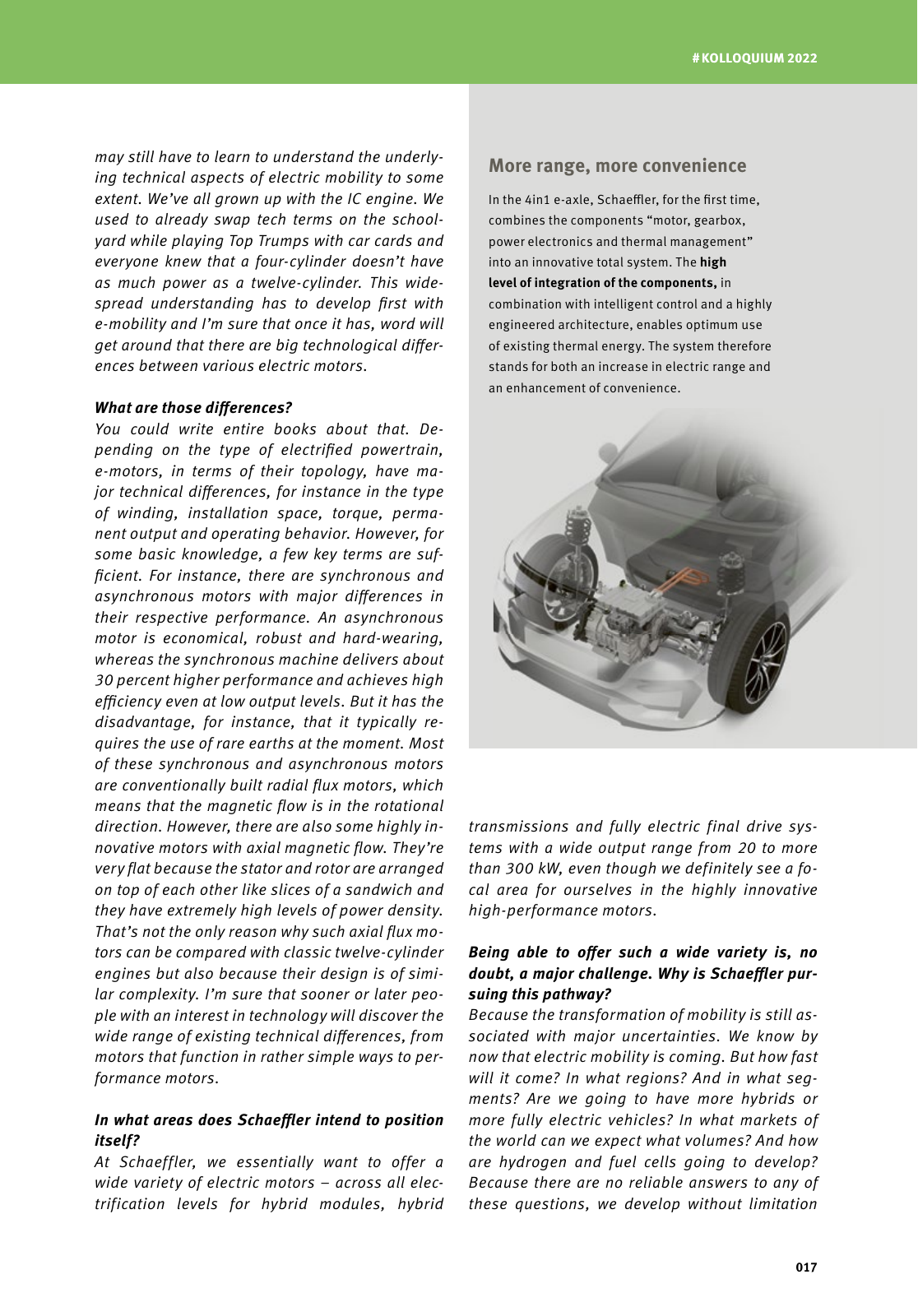may still have to learn to understand the underly ing technical aspects of electric mobility to some extent We ve all grown up with the IC engine We used to already swap tech terms on the school yard while playing Top Trumps with car cards and everyone knew that a four cylinder doesn t have as much power as a twelve cylinder This wide spread understanding has to develop fi rst with e mobility and I m sure that once it has word will get around that there are big technological diff er ences between various electric motors What are those diff erences You could write entire books about that De pending on the type of electrifi ed powertrain e motors in terms of their topology have ma jor technical diff erences for instance in the type of winding installation space torque perma nent output and operating behavior However for some basic knowledge a few key terms are suf fi cient For instance there are synchronous and asynchronous motors with major diff erences in their respective performance An asynchronous motor is economical robust and hard wearing whereas the synchronous machine delivers about 30 percent higher performance and achieves high effi ciency even at low output levels But it has the disadvantage for instance that it typically re quires the use of rare earths at the moment Most of these synchronous and asynchronous motors are conventionally built radial fl ux motors which means that the magnetic fl ow is in the rotational direction However there are also some highly in novative motors with axial magnetic fl ow They re very fl at because the stator and rotor are arranged on top of each other like slices of a sandwich and they have extremely high levels of power density That s not the only reason why such axial fl ux mo tors can be compared with classic twelve cylinder engines but also because their design is of simi lar complexity I m sure that sooner or later peo ple with an interest in technology will discover the wide range of existing technical diff erences from motors that function in rather simple ways to per formance motors In what areas does Schaeffl er intend to position itself At Schaeffler we essentially want to offer a wide variety of electric motors across all elec trification levels for hybrid modules hybrid In the 4in1 e axle Schaeffl er for the fi rst time combines the components motor gearbox power electronics and thermal management into an innovative total system The high level of integration of the components in combination with intelligent control and a highly engineered architecture enables optimum use of existing thermal energy The system therefore stands for both an increase in electric range and an enhancement of convenience transmissions and fully electric final drive sys tems with a wide output range from 20 to more than 300 kW even though we definitely see a fo cal area for ourselves in the highly innovative high performance motors Being able to off er such a wide variety is no doubt a major challenge Why is Schaeffl er pur suing this pathway Because the transformation of mobility is still as sociated with major uncertainties We know by now that electric mobility is coming But how fast will it come In what regions And in what seg ments Are we going to have more hybrids or more fully electric vehicles In what markets of the world can we expect what volumes And how are hydrogen and fuel cells going to develop Because there are no reliable answers to any of these questions we develop without limitation More range more convenience 017 KOLLOQUIUM 2022

Hinweis: Dies ist eine maschinenlesbare No-Flash Ansicht.
Klicken Sie hier um zur Online-Version zu gelangen.
Klicken Sie hier um zur Online-Version zu gelangen.